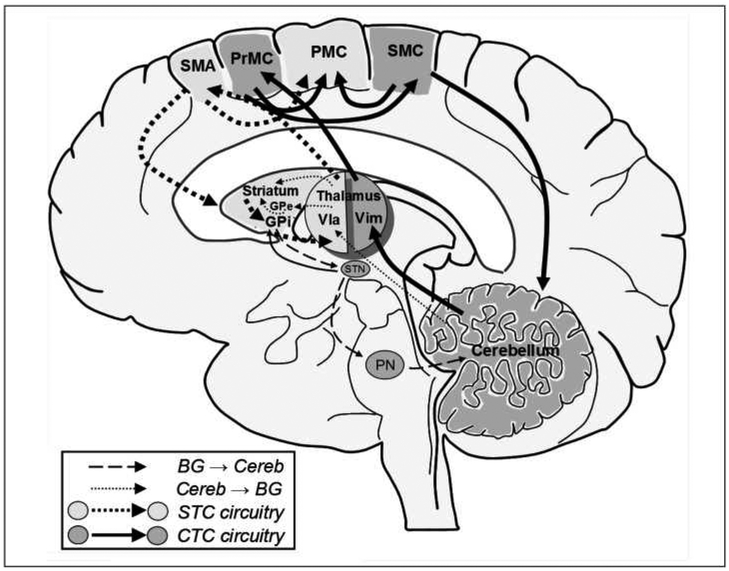Figure:
A conceptual framework for considering STC and CTC circuits. Neuroanatomical evidence indicates that for the STC circuit (light gray structures connected with dashed arrows) the output nucleus of the striatum, the internal segment of the GP, projects to the ventral lateral anterior nucleus of the thalamus, up to the SMA and then PMC, with reciprocal projections back to the striatum. For the CTC circuit (dark gray structures with solid arrows), the cerebellum projects to the ventral intermediate nucleus of the thalamus, up to the premotor cortex and then over to the SMC. The cortex then sends projections back to the cerebellum. In addition, the PrMC and SMC likely send fibers to the final motor endpoint, the PMC. Recent evidence suggests that the basal ganglia37 and cerebellum38 communicate and/or influence each other’s functions at the subcortical level. These connections are indicated using dashed-arrows (basal ganglia to cerebellum) and small-dotted arrows (cerebellum to basal ganglia). BG: basal ganglia, GP: globus pallidus, PMC: primary motor cortex, PN: pontine nuclei, PrMC: lateral premotor cortex, SMA: supplementary motor area, SMC: somatosensory cortex, STN: subthalamic nucleus, Vla: ventrolateral anterior nucleus of the thalamus, Vim: ventral intermediate nucleus of the thalamus (adapted from39).

